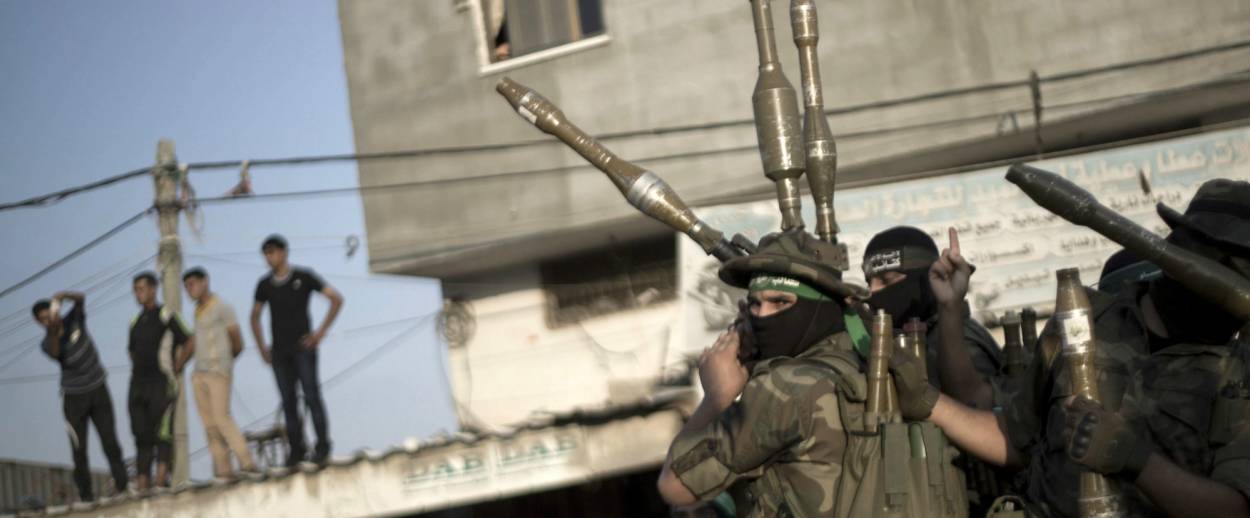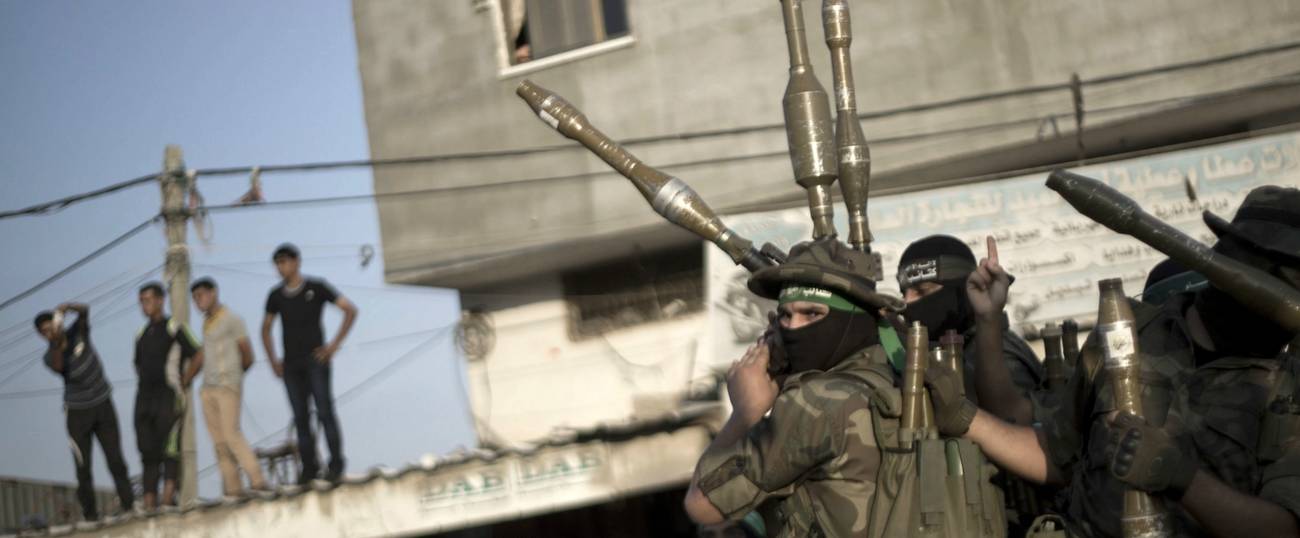Reporter Recounts Hamas’ Ruthless Tactics During 2014 Gaza War
On-the-ground dispatch details how Gaza’s military forces deliberately endangered their own civilians by using them as ‘living shields’




Last year, Polish foreign correspondent Wojciech Cegielski reported live from amidst the chaos of the 2014 Gaza war. Today in Haaretz, he offers a damning account of how he witnessed Hamas deliberately endanger civilians and journalists during that conflict. “Yes, Israel bombed Palestinian houses in Gaza,” the Polish Radio reporter writes. “But Hamas is also to blame for its cruel and selfish game against its own people.”
While saying that he does not have “hard evidence” beyond his personal experience, Cegielski attests that from “spending a month in the middle of this hell, it was obvious that they [Hamas] were breaking international rules of war and worst of all, were not afraid to use their own citizens as living shields.” Cegielski then proceeds to recount two arresting instances of Hamas placing civilians in harm’s way for which he was personally present:
The first incident happened late in the evening. I was in the bathroom when [I] heard a loud rocket noise and my Spanish colleague, a journalist who was renting a flat with me near the Gaza beach, started to scream. He wanted to light a cigarette and came to one of the open windows. The moment he was using his lighter, he saw a fireball in front of his eyes and lost his hearing.
From what our neighbors told us later, a man drove up in a pickup to our tiny street. He placed a rocket launcher outside and fired. But the rocket failed to go upwards and flew along the street at ground level for a long time before destroying a building. It was a miracle that nobody was hurt or killed.
When we calmed down, we started to analyze the situation. It became obvious that the man or his supervisor wanted the Israel Defense Forces to destroy civilian houses, which our tiny street was full of. Whoever it was, Hamas, Iz al-Din al-Qassam or others, they knew that the IDF can strike back at the same place from which the rocket was fired. Fortunately for us, the rocket missed its target in Israel.
The second incident targeted not Gaza’s people, but its foreign journalists:
I was sitting with other journalists in a cafe outside one of the hotels near the beach. During wartime, these hotels are occupied by foreign press and some NGOs. Every hotel is full and in its cafes many journalists spend their time discussing, writing, editing stories, or just recharging the phones. Suddenly I saw a man firing a rocket from between the hotels. It was obvious that we journalists became a target. If the IDF would strike back, we all would be dead. What would Hamas do? It would not be surprising to hear about the “cruel Zionist regime killing innocent and free press.”
At a time when the International Criminal Court is investigating whether Israel committed war crimes during the Gaza conflict, testimonies like Cegielski’s are a reminder that Hamas war crimes are also very much on the docket—and not just against Israel’s civilians, but against their own.
Indeed, the fact that this evidence is only emerging over a year after the Gaza war raises the question of what other Hamas crimes went unreported at the time, perhaps out of fear of retribution from the terrorist group.
Related: Brookings Analysts Pan United Nations Report on Gaza War
A Former AP Correspondent Explains How and Why His Colleagues Get Israel So Wrong
Yair Rosenberg is a senior writer at Tablet. Subscribe to his newsletter, listen to his music, and follow him on Twitter and Facebook.